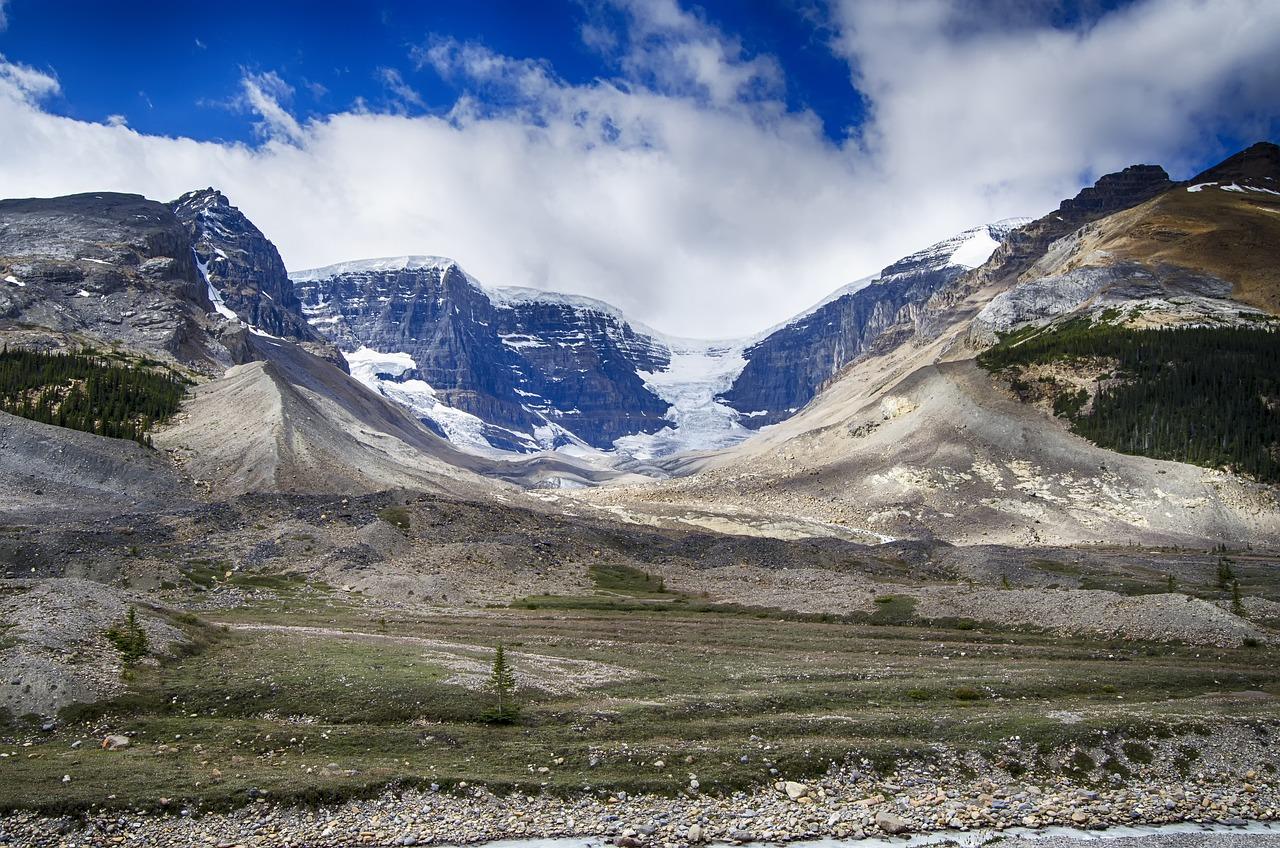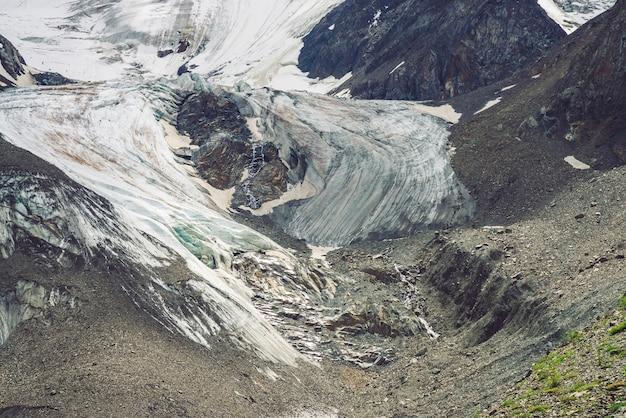Glaciers, with their immense beauty and power, have always fascinated humanity. These massive rivers of ice shape landscapes and leave their mark on the Earth’s surface. But did you know that not all glaciers are the same? There are different types of glaciers, each with its own distinct characteristics. In this blog post, we will explore the main difference between two prominent types of glaciers – continental glaciers and valley glaciers.
The year 2023 brings an exciting opportunity to delve into the wonders of glaciers and understand the nuances of their formations. By identifying the contrasts between continental and valley glaciers, we can gain a deeper appreciation for the forces that have shaped our world. So let’s embark on this glacial adventure and explore the fascinating realm of ice!
What Sets Apart Continental Glaciers from Valley Glaciers
Glaciers, those majestic icy giants that shape the Earth’s landscape, come in different sizes and forms. Two types of glaciers that often capture our attention are the continental glacier and the valley glacier. But what exactly distinguishes these frozen behemoths? Let’s dive into the frozen world and explore the main differences between continental glaciers and valley glaciers.
Size Matters: Continental Glacier
When it comes to size, continental glaciers take the crown. These frozen masses are massive in scale, covering vast areas of land. Imagine a colossal ice sheet extending for thousands of square kilometers, like a frigid empire ruling over the Arctic or Antarctic regions. These glaciers unleash their icy influence over the entire landscape, molding valleys, leveling mountains, and reshaping the world with their sheer magnitude. They are true ice behemoths, and their grandeur is unparalleled.
Navigating through the Valleys: Valley Glacier
On the other side of the icy spectrum, valley glaciers captivate us with their graceful presence. Unlike continental glaciers, valley glaciers are confined to mountain valleys, carving their way through the rugged terrain. These glaciers flow downhill, channeling their icy energy along the path of least resistance. They gracefully adapt to the twists and turns of the landscape, leaving behind a fantastic display of icy artistry. Picture yourself standing in a picturesque valley, surrounded by towering mountains, as the valley glacier inches forward, creating a mesmerizing scene.
Dynamics of Movement: Speed and Flow
Speed is another distinguishing factor between continental glaciers and valley glaciers. Continental glaciers tend to move much slower due to their vast size, crawling at a sluggish pace imperceptible to the naked eye. The slow creeps of continental glaciers form a stark contrast to the swift movements of valley glaciers. Valley glaciers, driven by gravity, have a swifter pace as they cascade down steep slopes, sometimes moving at several meters per day. Their energetic flow breathes life into the icy landscape, as if performing a graceful dance down the slopes.
Sculpting the Landscape: Shaping and Erosion
Both types of glaciers leave their mark on the Earth’s surface, but the way they shape the landscape is where their differences become apparent. Continental glaciers exercise their immense power by grinding and scraping the land beneath them. They can sculpt entire landscapes, smoothing rugged terrains, and leaving behind a flattened canvas. On the other hand, valley glaciers, with their focused flow, have a more precise touch. They carefully carve deep, U-shaped valleys, leaving behind dramatic landscapes that seem like nature’s artistry at its finest.
Beauty and Majesty: A Sight to Behold
In conclusion, the main differences between continental glaciers and valley glaciers lie in their size, location, movement, and shaping abilities. The grandeur of continental glaciers stretches across vast regions, while valley glaciers elegantly navigate through mountain valleys. The slow, majestic movements of the continental glaciers contrast with the nimble flow of valley glaciers. Finally, continental glaciers leave their mark by transforming large areas of land, while valley glaciers precisely sculpt awe-inspiring features. Whether you witness the immense power of a continental glacier or the artful touch of a valley glacier, both provide a captivating feast for the eyes, reminding us of the beauty and majesty of our icy planet.
FAQ: What is the Main Difference between a Continental Glacier and Valley Glacier
Welcome to this FAQ-style blog post where we’ll explore the intriguing world of glaciers! Today, we’ll delve into the contrasting characteristics of continental glaciers and valley glaciers. So, grab your ice axe and let’s embark on this glacial adventure!
How are Valley Glaciers Different from Continental Glaciers
Valley glaciers and continental glaciers are two distinct types of ice formations, each with its own unique features and quirks. Let’s break down the main differences between these icy giants.
Size Does Matter
Valley glaciers, also known as alpine glaciers, are relatively smaller compared to their colossal counterparts, the continental glaciers. Valley glaciers tend to form in valleys or mountainous regions, where gravity works its magic, causing the ice to flow downhill.
On the other hand, continental glaciers are enormous ice sheets that sprawl over vast expanses of land. Picture Antarctica or Greenland covered in a thick blanket of ice as far as the eye can see. These colossal ice masses have the power to shape entire landscapes!
Location, Location, Location
Valley glaciers tend to be found in, you guessed it, valleys! These icy wonders carve through mountainous terrains, leaving behind picturesque U-shaped valleys and awe-inspiring landscapes. A prime example is the famous Glacier Bay in Alaska, a stunning testament to the beauty and power of valley glaciers.
In contrast, continental glaciers blanket massive land areas, often spreading across entire continents. These frozen behemoths dominate the polar regions, enveloping vast stretches of Antarctica and Greenland. It’s as if Mother Nature wanted to showcase her icy talents on the grandest scale possible!
Which is the Biggest Ice River in the World
When it comes to the title of the “biggest ice river” in the world, the crown is proudly worn by the Lambert Glacier in Antarctica. This colossal sheet of ice spans a mind-boggling 250 miles wide and 400 miles long! That’s larger than the entire state of Pennsylvania!
The Lambert Glacier is a shining example of a continental glacier, showcasing the sheer magnitude and power of these frozen giants. It’s a reminder that nature’s creations can truly awe and humble us at the same time.
Is Ahtohallan in Real Life
Ah, Ahtohallan, the mythical glacial realm featured in Disney’s Frozen 2. While Ahtohallan captures our imaginations with its magical allure, it’s important to note that Ahtohallan is a creation of fiction. In reality, no physical place called Ahtohallan exists.
However, the inspiration for Ahtohallan, with its shimmering ice structures and mysterious allure, can be traced back to the beauty and wonder of our natural world. So, although we can’t physically visit Ahtohallan, we can still be captivated by the breathtaking real-life glaciers that continue to shape our planet.
We hope this FAQ-style blog post has given you a better understanding of the main differences between continental glaciers and valley glaciers. From the towering ice walls of valley glaciers to the expansive frozen landscapes of continental glaciers, these ice formations remind us of the incredible power and beauty of our planet.
Next time you encounter a glacier, whether it’s a small valley glacier nestled among mountains or a vast continental glacier stretching beyond the horizon, take a moment to appreciate the wonder and majesty of these frozen wonders. Stay cool and keep exploring the icy realms of our world!
Note: This blog post is for informational purposes only and does not constitute professional advice. Always consult a qualified expert for specific glacier-related inquiries.

